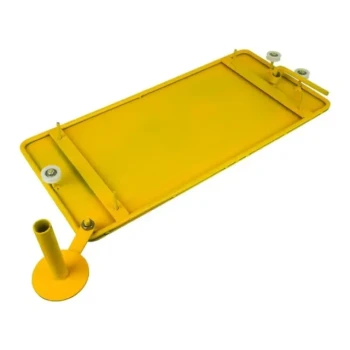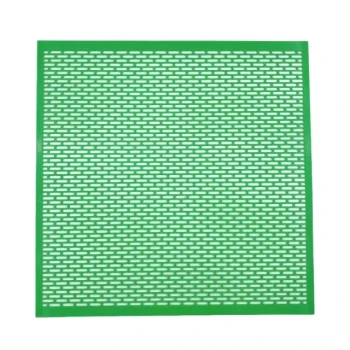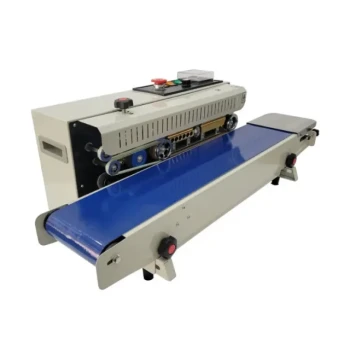From a practical standpoint, the primary benefits of fogging (vaporizing) oxalic acid over the dribble method are its superior speed, more even distribution throughout the hive, and a lower impact on the bees themselves, as they do not ingest the treatment. This makes it a highly efficient and widely adopted method for Varroa mite control.
The core difference lies in the application method: dribbling is a direct liquid treatment applied to the bees themselves, while fogging creates a fine crystal vapor that coats all interior surfaces of the hive. This distinction drives the key differences in speed, bee safety, and overall hive coverage.
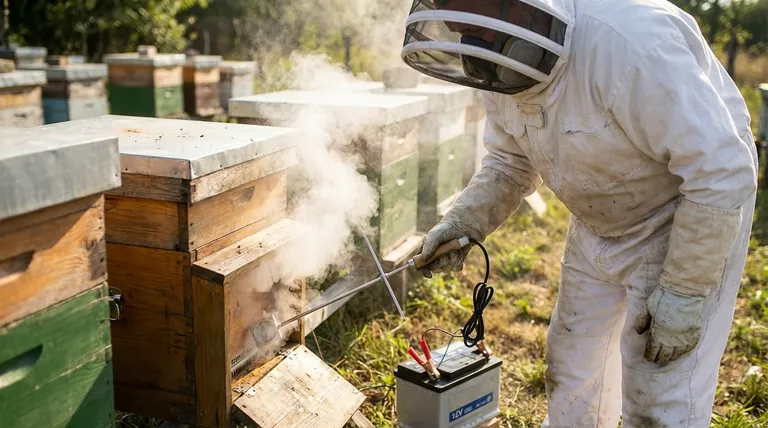
A Tale of Two Methods: Liquid vs. Vapor
To understand the benefits, it's essential to recognize the fundamental difference between how these two treatments work. Each has a specific mechanism and ideal use case.
Understanding the Dribble Method
The dribble method involves mixing oxalic acid dihydrate crystals with a warm 1:1 sugar water solution. This mixture is then drawn into a large syringe.
The beekeeper applies a specific dose (typically 5 ml per seam of bees, not exceeding 50 ml total) by drizzling the liquid directly onto the bees clustered between the frames.
Understanding the Fogging (Vaporization) Method
The fogging method, more accurately called vaporization, uses a specialized tool to heat raw oxalic acid crystals. This process is called sublimation.
The heat turns the solid crystals directly into a gaseous vapor, which is then pumped into the sealed hive. As it cools, the vapor re-crystallizes into microscopic, spiky crystals that coat all interior surfaces, including the bees.
Key Advantages of Fogging
The shift from a liquid application to a vapor-based one introduces several significant advantages that appeal to beekeepers managing apiaries of any size.
Superior Speed and Efficiency
Fogging is exceptionally fast, with an application time often under one minute per hive. This allows a beekeeper to treat dozens of colonies in a fraction of the time it would take to open each one and manually dribble the solution frame by frame.
More Even Distribution
A key benefit is the comprehensive coverage. The vapor fills the entire hive cavity, ensuring an even distribution of fine oxalic acid crystals. This contrasts with the dribble method, which only treats the bees located directly in the path of the liquid stream.
Reduced Stress on Bees
With the dribble method, bees ingest the acidic sugar syrup, which can be harsh on their digestive systems and cuticle. Fogging is a contact treatment; the fine crystals kill mites that come into contact with them. This is generally considered less invasive for the bees.
Understanding the Trade-offs
While fogging presents clear benefits, it's not universally superior in every situation. Acknowledging the trade-offs is key to making a sound management decision.
Why Dribbling Still Has Its Place
The dribble method requires minimal specialized equipment—a syringe is far cheaper than a vaporizer. It is also highly effective when used correctly, particularly in cooler climates where bees are in a tight cluster, making them an easy target for the liquid application.
The Critical Limitation of Both Methods
It is crucial to understand that neither dribbling nor fogging penetrates capped brood. Varroa mites reproducing under the wax cappings are completely protected from the treatment. For this reason, both methods are most effective during a broodless period, either naturally occurring in late fall or by manipulating the queen's laying cycle.
Safety and Equipment Requirements
Vaporizing oxalic acid requires significant Personal Protective Equipment (PPE). The vapor is a severe respiratory irritant and is dangerous to inhale. A properly rated respirator, eye protection, and gloves are non-negotiable. While dribbling is less of an inhalation risk, proper handling with gloves is still essential.
Choosing the Right Method for Your Apiary
Your decision should be based on a clear assessment of your goals, resources, and the number of colonies you manage.
- If your primary focus is speed and efficiency, especially with many hives: Fogging is the superior choice due to its rapid application time and ease of use across a large apiary.
- If your primary focus is minimal equipment cost and you have only a few hives: The dribble method is highly effective and requires only a syringe and basic safety gear.
- If you are treating in cooler weather with a tightly clustered colony: The dribble method can be very effective as it directly targets the concentrated population of bees.
Ultimately, both are proven tools in Varroa mite management, and the best choice depends on the specific conditions of your apiary, your budget, and your time.
Summary Table:
| Method | Key Advantage | Ideal Use Case |
|---|---|---|
| Fogging | Fast application, even hive-wide distribution, less bee stress | Large apiaries, efficiency-focused beekeepers |
| Dribble | Low equipment cost, effective on clustered bees | Small-scale beekeepers, cooler weather treatments |
Upgrade Your Varroa Mite Control Strategy with HONESTBEE
Choosing the right equipment is crucial for effective and efficient hive management. Whether you're a commercial apiary looking to scale up with fogging or a distributor supplying beekeepers with reliable tools, HONESTBEE has you covered.
We supply high-quality, wholesale-focused beekeeping supplies and equipment, including robust oxalic acid vaporizers designed for professional use. Our products help you achieve superior mite control, protect your colony's health, and save valuable time.
Ready to enhance your operation? Contact our expert team today to discuss your needs and discover how our wholesale solutions can benefit your business.
Visual Guide
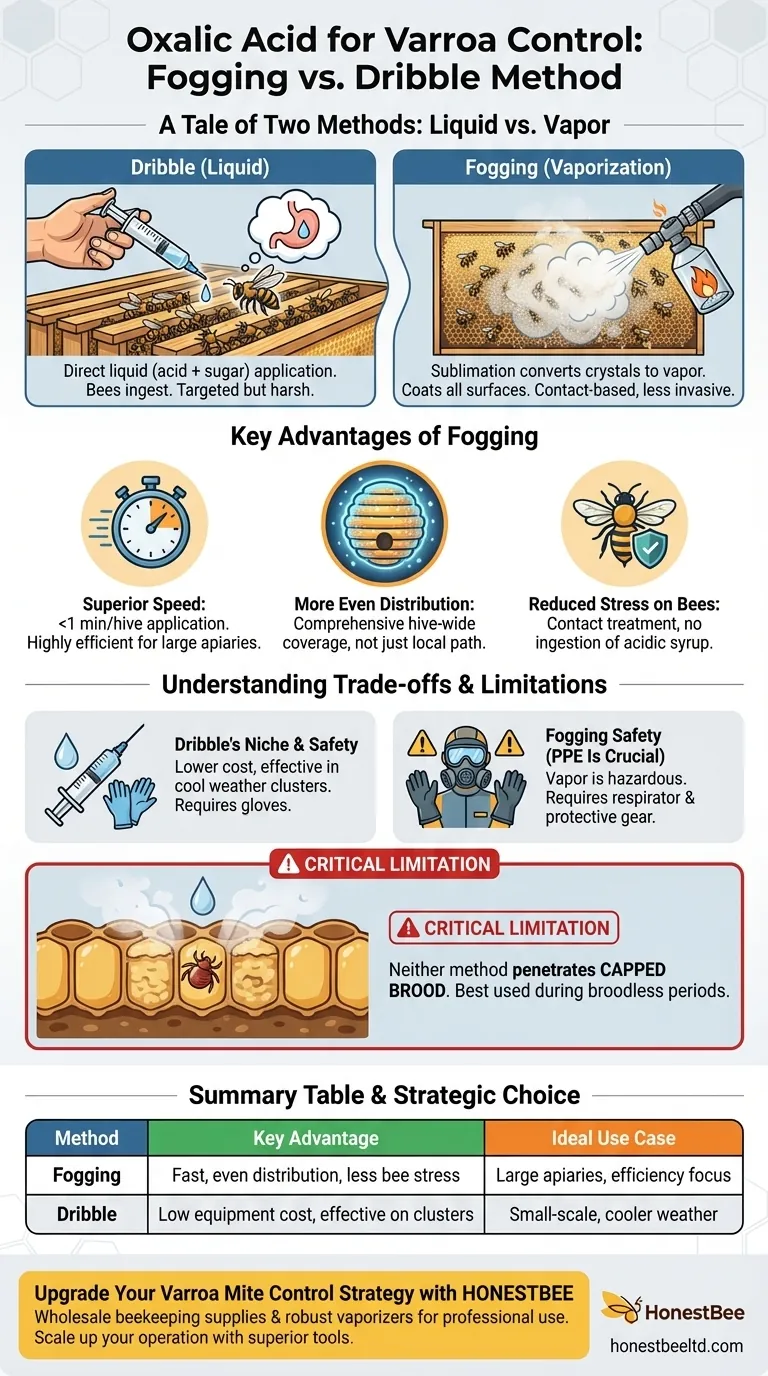
Related Products
- Durable 12V Oxalic Acid Vaporizer for Varroa Mite Treatment Beehive Beekeeping Tool
- Oxalic Acid Vaporizer 12V for Bee Varroa Mite Treatment
- 12V Bee Mite Removal Evaporator Oxalic Acid Vaporizer for Bee Fumigation Treatment 180W Atomization
- Heavy Duty 12V Oxalic Acid Evaporator Vaporizer for Bee Varroa Mite Treatment Beekeeping Fumigator Atomizer
- Varroa Easy Check Mite Tester Kit Counter Alcohol Wash Jar
People Also Ask
- What should be done after applying the vapor? A Step-by-Step Guide to Sealing Your Hive
- What are the methods for applying oxalic acid in beekeeping? Control Varroa Mites Effectively
- What are the two approved methods of using oxalic acid for mite control? Dribble vs. Vaporization Explained
- What is the overall goal of using oxalic acid in late fall for beekeepers? Maximize Winter Survival with a Broodless Treatment
- What is the role of oxalic acid in plants? A Key to Plant Defense and Internal Regulation









